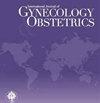Risk factors for relaparotomy after cesarean delivery
Abstract
Objective
To identify and analyze risk factors associated with relaparotomy following cesarean delivery (CD), focusing on obstetric and surgical parameters.
Methods
Retrospective case–control study conducted at a high-volume tertiary obstetric center. We reviewed all women who underwent CD between 2013 and 2023. Patients who required a relaparotomy, defined as the reopening of the fascia, were included in the study group. Patient data were systematically reviewed to identify potential risk factors contributing to the need for post-CD relaparotomy, compared with a control group that did not undergo a relaparotomy.
Results
Out of 11 465 women underwent CD, 59 (0.5%) required relaparotomy. Using a multivariate model for independent risk factors, we found the following to be associated with relaparotomy: emergency CD (adjusted odds ratio [aOR] 3.09, 95% confidence interval [CI] 1.78–5.38, P < 0.01), placenta previa (aOR 4.66, 95% CI 1.54–14.11, P < 0.01), and multiple gestation as indications for the CD (aOR 4.61, 95% CI 2.10–10.12, P < 0.01); estimated intraoperative blood loss of more than 1 L (aOR 5.98, 95% CI 2.79–12.80, P < 0.01); and intraoperative adhesions (aOR 7.12, 95% CI 4.06–12.48, P < 0.01).
Conclusions
Our study underscores the multifactorial nature of relaparotomy after CD, emphasizing the significance of considering a broad array of risk factors. By identifying and understanding these factors, clinicians can optimize patient care and potentially reduce morbidity, particularly the need for subsequent surgical interventions.



 求助内容:
求助内容: 应助结果提醒方式:
应助结果提醒方式:


